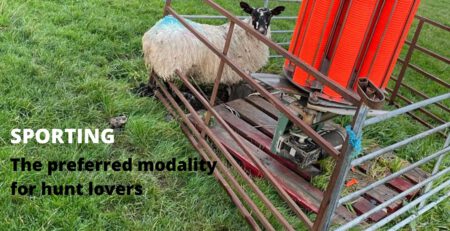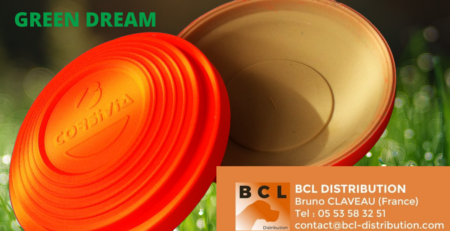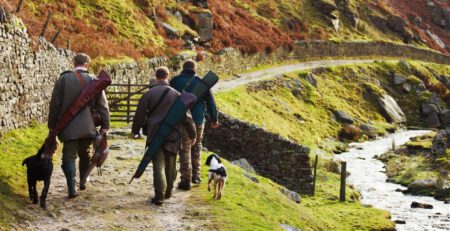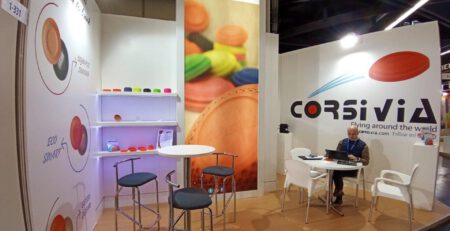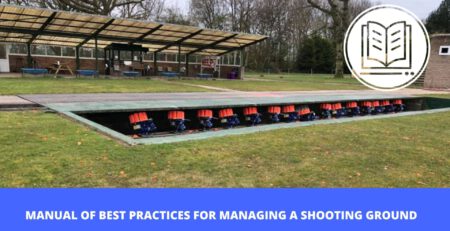INTERVIEW WITH JORGE DARÍO, OWNER OF EL FRESNILLO SHOOTING RANGE, VENUE OF THE 41ST WORLD CUP OF UNIVERSAL TRENCH, IN ÁVILA
This weekend, at El Fresnillo shooting range, in Ávila, the 41st World Cup of Universal Trench will take place, where our Green Dream ecological clay target will be the star of all the shoots.
Its owner, Jorge Darío, has granted us an interview in which, apart from giving us some information about the championship, he explains his career in the world of clay target shooting, with two shooting ranges behind him.
We have previously talked to you on our blog about the steps and regulations for the construction of shooting ranges of Skeet and Trap, but today we bring you a real testimony from an expert in the management of shooting ranges.
Do you want to hear first-hand about their experience?
Read the full interview!
GETTING TO KNOW JORGE: HIS BEGINNINGS IN CLAY PIGEON SHOOTING
Tell us a little about yourself, how long have you been involved in clay pigeon shooting, and how did you get started in the sport?
My parents had a hardware and material store and, from a very young age, I had to go with my father to the villages to take the clay targets and cartridges for the typical shootings during the summer months.
I remember unloading by hand the lorries of targets, which my father brought from the Corsivia factory. Boxes of black clay targets, in big brown boxes, which we stored so that we could take them to the villages when the competitions arrived.
I think that was my first contact with clay pigeon shooting.
In addition, my father would shoot clay target shooting on these shoots and I, along with the other children who accompanied their parents, would pick up the targets when the shoot was over. Occasionally, my father would let me shoot a shot, and that’s when I got, as we say, the good old clay pigeon shooting virus in my body.
EXPERT IN SHOOTING RANGE MANAGEMENT
Why did you decide to set up your own shooting range? Tell us how you decided to push for the creation of the La Isla Shooting Range
The years went by, and I only hunted, but one day, about 10 years ago, looking at one of my father’s old storehouses, where we used to store the clay targets when I was a child, I found a series of boxes of those black targets piled up, and I thought it would be good to make a shooting range in the area.
First, I had the idea of organizing a multi-adventure in which one of the activities would be clay pigeon shooting.
And so it was!
I started up a multi-adventure company where I ran camps for children, horse riding, canoeing, hiking trails, etc. And, while I was setting up the company, one day, in April 2013, I decided to start work on the shooting range.
What were the steps you had to take in order to set it up?
Well, the steps, very hard!
Starting with convincing my parents and brother to start with the shooting range, which they were opposed to…
But I don’t know if it’s a defect or a virtue that, if I put my mind to something, in the end I have to do it, whatever it costs me, and that’s how it was.
I woke up one day at 7 o’clock in the morning and said: TODAY I START THE SHOOTING RANGE! And I set myself to the task. That same day, I began to fence a small farm owned by my parents, and we started the work without their permission. I had to invent a thousand reasons to start the works and, at the end, they gave up and left me as impossible. That’s how we started with La Isla Shooting Range (name I decided that same night because of a piece of land we have nearby that is called like that).
Steps I had to take to build the shooting range
I started by fencing the field with 2-metre mesh. Once I had fenced it in, which cost me sweat and tears, plus a lot of labour and the corresponding applications for permits from the local council, the environment, etc., I built and fitted the entrance gate to the shooting range.
Then I started to move the papers and permits with the Guardia Civil (which arrived a year and a half after the works started).
What difficulties did you encounter?
Well, the difficulties were many and very great.
- Starting with the secretary of the town hall who did not send the documentation to the town hall, which delayed all the permits.
- Then with the environment, which made it very difficult for me to start fencing the farm.
- With Hidrográfica del Tajo, which said that this land was affected by irrigation and that it had to obtain many water and septic tank permits, as well as other permits.
- And, of course, with the Guardia Civil, who, the first time they answered me to inform me about the documentation I had to prepare, I went white and despairing when I saw the amount of papers and plans I had to present.
That was a huge blow that left me with no strength to continue, but, as I said before, when I get something in my head I don’t stop until I have it. So I got down to work and started to prepare that infinite number of papers.
What aspects do you consider most important when designing a clay pigeon shooting range to ensure an optimal experience for participants in any type of competition?
- Firstly, the situation of the courts in relation to the sun. This factor is fundamental for the competitions to be able to keep to their schedules and to be able to take place normally.
- Secondly, the design of the pits. The position and height of the machines in relation to the exit of the targets is very important. So is choosing a great machine like Matarelli and its technical service, Tiro Sport, to achieve optimum performance for this sport.
- Thirdly, the functioning of the microphones and the machines. We must pamper them every day so that, when the athlete, in any of the fields, says AH, the target comes out at the voice without any kind of delay. In this way, the shooter, together with his shooting technique, will enjoy the competitions, as he will be able to obtain good results.
- Fourthly, cleanliness. Of course, it is also very important to clean the shooting ranges, as well as to keep the exit of the targets clean and green so that the vision is correct.
- Fifth and last, the organization of the competition. The treatment of the clients, making them feel at ease, is the magic touch that a great shooting range needs, which must be taken care of day by day.
And speaking of the location of the ranges in relation to the sun, what do you think are the key factors to consider when selecting the location of a clay pigeon shooting range?
The geographical location of any shooting range is critical and will always depend on the size of the facility you want to achieve.
If your project is small, for example, with only one shooting range, any town could be a good place to locate it, but, if your project is for a 4 or 5 range with the idea of making big competitions, the geographic situation at national level is very important.
It is also important to be close to a large city in order to be able to offer accommodation, restaurants, etc. and, of course, to be well-connected by highways and roads so that the shooter can have good access to the countryside.
Once the geographical location has been chosen, it is necessary to choose the location of the property. It is essential that the shooting ranges face north so that the sun is not a problem. So is the month in which the work is started, and the ranges are located. A crucial task when building a shooting range is to study the sun in the competition months, as the sun is different in winter than in summer.
Last but not least, it should also be carefully studied whether the land is affected by any environmental or archaeological issues, as well as by birds, trees or power lines, which may become a factor to be taken into account for the definitive non-authorisation of the camp.
And, having already managed a shooting range under your belt, why did you decide to embark on the creation of your second shooting range, El Fresnillo?
Well, it’s a long story, although, in short, I went to see it with some friends, and I was very sad to see those facilities closed. When you see something you like, and you see it closed and in such a bad condition, I felt sorry for it and decided to recycle it and give it a second life.
And what a second life with the celebration of the 41st World Cup of Universal Trench!
We can only wish you the best of luck for this weekend and a lot of success with our Green Dream ecological clay target.
We would love to hear from you again to tell us how the championship has gone and explain a bit more about its organization.
We are waiting for you!

